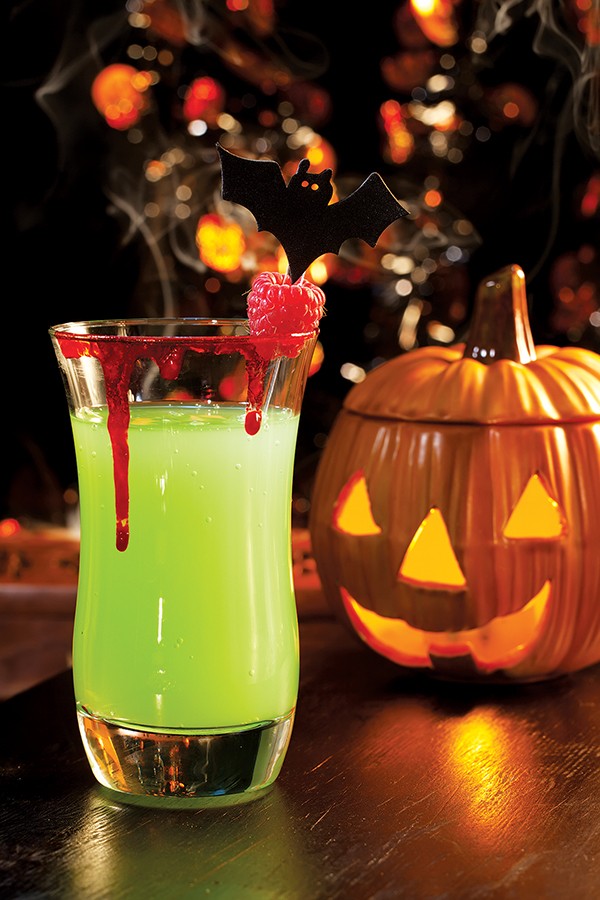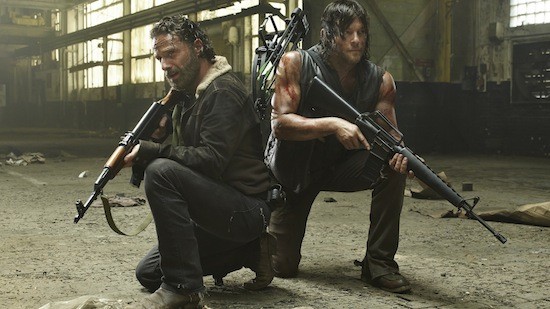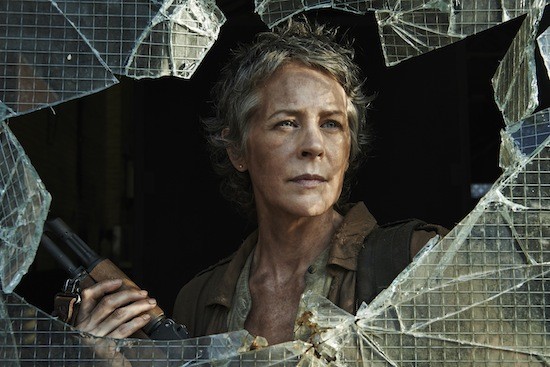Whether you’re hosting friends for Halloween fun this weekend, sipping drinks while manning the candy bowl for trick-or-treaters, or ringing doorbells with your own costumed kids, I urge you to get into the “spirit” of the season with a specialty cocktail.
Go for the jugular, and try making a deep purple or red drink that would make Dracula salivate. Martha Stewart’s website has a recipe for a crowd-pleasing Spiced (and Spiked) Concord Grape Punch, which combines vodka with Concord grape juice, cardamom pods, cinnamon sticks, nutmeg, and simple syrup. An alternative is Real Simple‘s Vampire Punch, a blend of Campari, gin, orange juice, club soda, simple syrup, and pomegranate seeds.
Saveur, meanwhile, offers the Little Devil, a mean blend of tequila, mescal, cherry liqueur, agave, lime juice, and Ancho Reyes ancho chile liqueur, a major flavor booster that I plan to write about in a future column. Traditionally served in a rocks glass, the Little Devil could be decanted into a Mason jar for door-to-door trick-or-treating. Thanks to the Ancho Reyes, the drink packs a nice heat that will keep you warm on a crisp fall evening.
You can also use that cherry liqueur to mix up a classic Blood and Sand, a Scotch and vermouth concoction named for the 1922 silent film starring Rudolph Valentino. Or “bloody” your beer with a michelada-like recipe I found via Bon Appetit‘s website, which combines tomato juice, lime juice, hot sauce, Worcestershire sauce, and light beer in glasses rimmed with a blend of salt and red pepper flakes.
If you prefer your Halloween more silly than spooky, I recommend making the Jack-O-Lantern, a nice cocktail to nurse while you’re greeting trick-or-treaters at the front door. The drink is simple to make, but, thanks to its bright orange color, feels particularly Halloween-y. Just pour 1 ounce cognac, 1 ½ ounces orange juice, ½ ounce ginger ale, and ½ ounce Grand Marnier into a cocktail shaker, then strain into an old fashioned glass over ice. Top the drink with an orange wheel that has a lime peel poked through it to create a “pumpkin stem.”
 Eugene Bochkarev | Dreamstime
Eugene Bochkarev | Dreamstime
The devil is in the details: Rim your drinking glass with lime juice and colored sugar, found in the baking aisle of the grocery store. Make eyeball garnishes, using large, seedless grapes augmented with blueberry pupils — or get the same effect with pitted olives stuffed with chunks of baby carrots. If you have time, peel radishes to create a “bloodshot” effect, then use a melon baller to scoop out enough space for a halved pimento-stuffed green olive, which makes the perfect iris and pupil. Stick any of these on a toothpick, then drop them into your martini glass for an instant fright.
If you’re pulling out all the stops for a costume party, place dry ice under your punch bowl, and fill and freeze surgical gloves to make ice cube “hands” to cool the concoction inside it. Or, if you’re serving hard cider, create shrunken heads by carving faces into Granny Smith apples a few days before the party, then float them in the cider.
What I don’t recommend for Halloween: drinking Zombies or any variation thereof. The name sounds apt for Halloween, but a Zombie can take most mortals from a good time to a black-out drunk faster than you can say Victor Frankenstein. And the last thing you want to have happen this weekend is to turn from Dr. Jekyll to Mr. Hyde. Save the Zombie for another night. Drink safely, and have fun!



